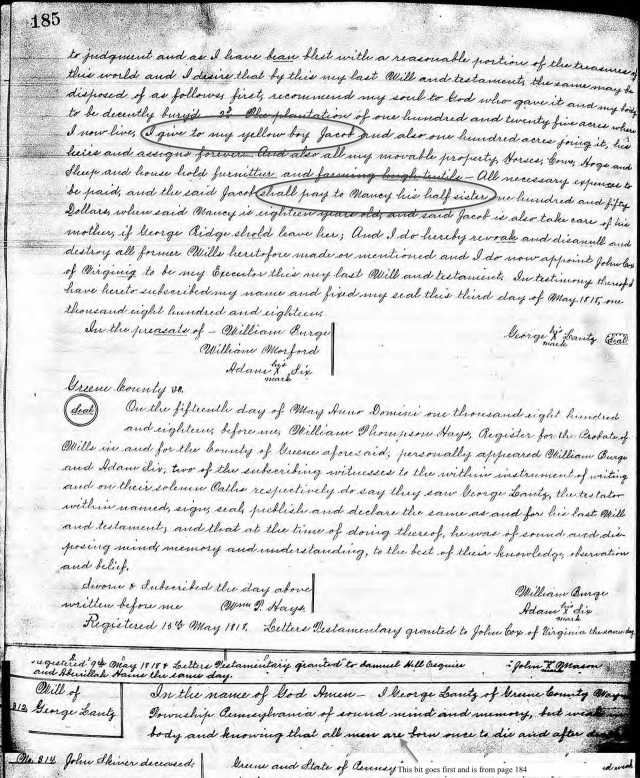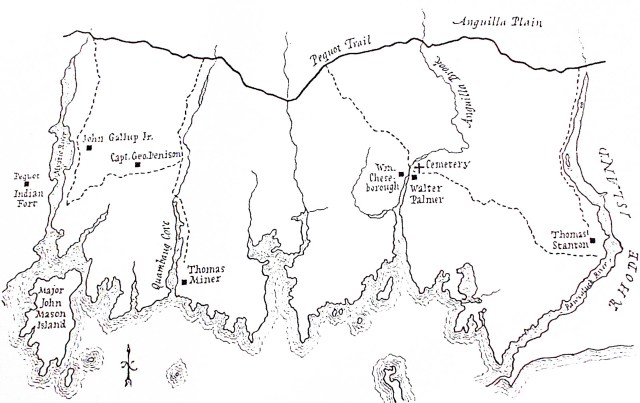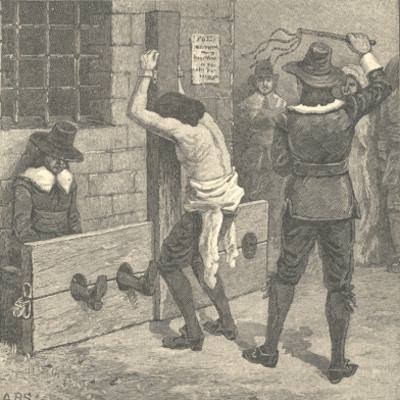My mother and I took a trip out to Jacksonburg, West Virginia…lets see…well quite a few years ago now. The main reason for the visit was to attend a Hays family reunion, the secondary reason was to see what details we could find out about the Hays and related families. It was also nice to actually see where these ancestors had lived, worked and spent their lives.
No one at the reunion was really much help in filling out blank spots in my research, but we did meet up with one of our Stackpole cousins who gladly showed us around to a few of the cemeteries we would have been hard pressed to find on our own. (It is very hilly and hidden country out there.)
One of the places we were able to visit was the cemetery where my 5x great grandparents, Alexander and Margret (Minor) Lantz, are resting in peace. This quiet, restful, cemetery is at the top of a hill with lots of open space, and looks onto the Stackpole land that is on the next hill over. The view of the surrounding country was excellent.
I know very little about these grandparents, except that Alexander and Margret were always buying property. Many of these purchases were for land in the 100s of acres. Sometimes this property was purchased through auctions, the current owners not being able to pay their mortgages, so they were able to get incredible deals. This penchant for owning property has paid off in a great way for everyone, for it has made it possible for a lasting legacy of great value to be created.
I have come to learn that in 2006 the Lantz family farm, which consisted of 555 acres, was “gift deeded” to the Wheeling Jesuit University by Lantz family descendants, so that the land and farm would be preserved, and the area could be enjoyed by the public. The DNR has joined in a cooperative agreement with the WJU to co-manage the property:
…for its wildlife resources and to maximize public outdoor recreational opportunites including hunting, fishing, and hiking on the interpretive natural trails.1

The Field Trip article (below) gives a short history of the property, what you can see when you visit, and also talks about projects in the works. But first, here is the ‘Wyatt patent’ deed as mentioned in the article:
1826 Sep 30 Tyler County, West Virginia —
Jasper A Wyatt and wife and Augustus B. Wyatt, Tyler County
to
Alexander Lantz, of Wayne Township, Greene County, Pennsylvania… in consideration of $600 of lawful money of the Commonwealth …land containing 177 acres situate in the county of Tyler on the South Fork of Fishing Creek and bounded as follows to wit:
beginning at a white walnut & two sugar trees on the bank of the creek thence
S E 46 poles to a white walnut at the mouth of Buffalo Run thence
S 15 W 70 poles to sugartree thence
S 27 W120 poles to a red oak thence
N 70 W 32 poles to chestnut oak and ironwood thence
N 20 W 60 poles to two beeches on a hill side thence
N 62 W 92 poles to an ash and sugar tree on the creek bank thence
N 20 E 44 poles to a white oak thence
N 40 E 20 poles to a small white walnut thence
S 75 E 60 poles to two hickories on the top of the hill and thence
S 86 E 165 poles to the beginning…together with all the singular houses, barns, buildings, stables, yards, gardens, orchards, lands, tenements, meadows, pastures, feeding commons, woods, underwoods, ways, waters, watercourses, fishing privileges…
Jasper Wyatt
Catherine [herXmark] Wyatt
Augustus [hisXmark] B. Wyatt2

While the property was certainly there, the preserve was barely a glimmer in the eye at the time we were visiting, and now I want to go back and see this wonderful place. Knowing that this property was a part of our family history kinda makes it feel even more special. If Alex and Margret did nothing else with their lives, they made it possible for a little part of world to be preserved.
Source:
1. [picture and quote pulled from the following article: http://www.wvdnr.gov/wildlife/magazine/Archive/07Fall/Providing%20a%20Better%20Tomorrow.pdf]
2. Land Deed [v2p190 image 1336-1337]; Deeds, 1815-1902; Tyler County (West Virginia) County Clerk; Deeds, v. 1-3 1815-1829 – FHL film #855954
More information can be found at the following sites, there is also a facebook page:
http://wju.edu/mission/lantzfarm.html
https://wvexplorer.com/attractions/wildlife-management-areas/lantz-farm-nature-preserve-wma/









